Art And Architecture Of The Igbo People - Culture (4) - Nairaland
Nairaland Forum / Nairaland / General / Culture / Art And Architecture Of The Igbo People (67951 Views)
The Art And Architecture Of Yorubaland! / Benin Art And Architecture / Show Pictures Of Africas Art And Archaeological Treasures (2) (3) (4)
(1) (2) (3) (4) (Reply) (Go Down)
| Re: Art And Architecture Of The Igbo People by aljharem3: 10:43pm On Oct 17, 2011 |
| Re: Art And Architecture Of The Igbo People by Bawss1(m): 11:29am On Oct 18, 2011 |
Lovely thread and interesting pictures so far. Any chance that we'll see modern Igbo art too? Or aren't there any? |
| Re: Art And Architecture Of The Igbo People by Crayola1: 3:05am On Oct 20, 2011 |
 Igbo-Ukwu (Igbo: Great Igbo) is a town in the Nigerian state of Anambra which was the site of three famous archaeological sites that revealed a highly sophisticated metal-working culture. The first, Igbo Isaiah, was uncovered in 1938 by Isaiah Anozie a local villager who stumbled upon the bronze works while digging beside his home. Subsequent excavations by Thurston Shaw in 1959 resulted in the discovery of two other sites, Igbo Richard and Igbo Jonah containing the remains of an ancient culture, including jewelry, ceramics, a corpse adorned in what appears to be regalia, and many assorted bronze, copper, and iron objects. Radiocarbon dating placed the sites around the 10th century or earlier, which would make the Igbo-Ukwu culture the earliest known examples of bronze casting in the region centuries before the more famous Ife bronzes. Archaeological site actually three sites in southeastern Nigeria, associated with the Nri-Igbo. The three sites include Igbo Isaiah (a shrine), Igbo Richard (a burial chamber), and Igbo Jonah (a cache).  [img]http://migrationstoriesofnigerianigbo.files./2010/09/igbo-ukwu_bowl22.gif[/img] [img]http://migrationstoriesofnigerianigbo.files./2009/11/igbo-ukwu3.jpg[/img] [img]http://pics.livejournal.com/cnsofo1/pic/000060f7[/img]    [img]http://1.bp..com/_sMl7AN1EAgs/TP2aTutlBMI/AAAAAAAAAaY/N8MjBuCrnfA/s1600/Igbo-Ukwu+Bronze+Bowl.JPG[/img] [img]http://migrationstoriesofnigerianigbo.files./2010/07/igbo-ukwu.jpg[/img]  [img]http://3.bp..com/-VxBHKhceilY/TcCDGxTxvRI/AAAAAAAAAVg/QdgAqzzl3l8/s1600/scabbard.jpg[/img] [img]http://afrotreasures.biz/images/T/OS80017-1.jpg[/img] [img]http://afrotreasures.biz/images/T/OS80027-1.jpg[/img] [img]http://www.africanart.nl/images/stories/Igbo-Ukwu_band_2.jpg[/img]  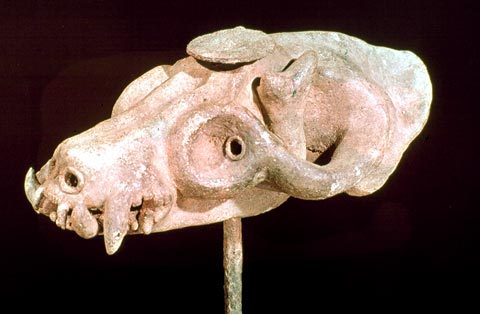 [img]http://schools.nashua.edu/myclass/lavalleev/Art%20History%20Pictures/ch15/15-04.jpg[/img]  [img]http://www.thenationonlineng.net/2011/thumbnail.php?file=Igbo_6_263346586.jpg&size=article_medium[/img]  Sorry for the post delay spam bot fault, 1 Like 3 Shares |
| Re: Art And Architecture Of The Igbo People by odumchi: 7:46pm On Oct 23, 2011 |
Anyone have ekpo masks? |
| Re: Art And Architecture Of The Igbo People by aljharem3: 7:51pm On Oct 23, 2011 |
odumchi: Yeap, [img]http://t3.gstatic.com/images?q=tbn:ANd9GcR9tSGKQiauUkC6UkVHfldW_R82BYGVn5TcAxq_1W4f7jpa2C6V[/img] Ibibio art |
| Re: Art And Architecture Of The Igbo People by odumchi: 8:09pm On Oct 23, 2011 |
That's a decretory version. I'm referring to the ones that can actually be worn. I don't know why but it's hard to find any real pictures of ekpo masquerades on the internet. It would be great if anyone could find some. |
| Re: Art And Architecture Of The Igbo People by aljharem3: 8:12pm On Oct 23, 2011 |
odumchi: do u mean something like this [img]http://t3.gstatic.com/images?q=tbn:ANd9GcRNugHm9YKgK9LHnR3OBFujC6oAbqDxNKgiVsKyN8-JB2JdkekoAw[/img] moreover is nwa ekpo man mask the same as what you are saying ? |
| Re: Art And Architecture Of The Igbo People by odumchi: 8:27pm On Oct 23, 2011 |
The masks I am talking about are like the ones in this video: [flash=400,400] https://www.youtube.com/watch?v=X0wF6nGoq3A[/flash] |
| Re: Art And Architecture Of The Igbo People by aljharem3: 8:39pm On Oct 23, 2011 |
^^^^^^^^ [img]http://t3.gstatic.com/images?q=tbn:ANd9GcQuLY7wqfSoPBlf9mqShCnaEnYYBT2KcgSW9oetV9U6P-59GT2ICw[/img] [img]http://t0.gstatic.com/images?q=tbn:ANd9GcSaKUWXiJ07u2hwwMqVPXEHR5Vz_4_8DRjhur62S9MUDhzoLw6Z[/img] The Ekpo(Soul) masquerade is widespread among eastern Nigerian groups of the Ibibio. It is used to present ethical examples essential to effective social functioning and interaction. One group of masks deals with socially negative qualities and with the spirits of persons who have either died in socially unacceptable ways or who have violated codes or laws. The Ekpo is represented with masks which embody ugliness, distortions, or violence as the Ibibio would characterize it visually. Contrasting masks present positive souls, which are represented by masks whose forms are considered beautiful, and therefore good. The Ibibio is not a single group but several networks of independent communities, with local unity represented by secret associations and their masquerades. The Ekpo society uses black masks, often of naturalistic appearance and with movable jaws, to maintain social order and propitiate the ancestors; some of these masks represent disease and deformity http://blackheritage.afreel.com/Ekpo%20Masquerade.htm |
| Re: Art And Architecture Of The Igbo People by Crayola1: 4:18am On Nov 22, 2011 |
Sorry about the lack of updates  I guess Crayola will do this solo I guess Crayola will do this solo  Ika(Western igboland), bordering Isoko, Edo state. [img]http://mccoy.lib.siu.edu/jmccall/jones/igbo/ika1.JPG[/img] [img]http://mccoy.lib.siu.edu/jmccall/jones/igbo/ika2.JPG[/img] [img]http://mccoy.lib.siu.edu/jmccall/jones/igbo/ika3.JPG[/img] [img]http://mccoy.lib.siu.edu/jmccall/jones/igbo/ika4.JPG[/img] [img]http://mccoy.lib.siu.edu/jmccall/jones/igbo/ika5.JPG[/img] [img]http://mccoy.lib.siu.edu/jmccall/jones/igbo/ika6.JPG[/img] [img]http://mccoy.lib.siu.edu/jmccall/jones/igbo/ika10.JPG[/img] [img]http://mccoy.lib.siu.edu/jmccall/jones/igbo/ika7.JPG[/img] [img]http://mccoy.lib.siu.edu/jmccall/jones/igbo/ika11.JPG[/img] [img]http://mccoy.lib.siu.edu/jmccall/jones/igbo/ika15.JPG[/img] [img]http://2.bp..com/_jeBv7EEofYQ/TVLtl3l6HBI/AAAAAAAAAPc/31MZW_rBE18/s1600/Note%2Bon%2BIbo%2BHouse.jpg[/img]  |
| Re: Art And Architecture Of The Igbo People by Crayola1: 4:25am On Nov 22, 2011 |
Nsukka-Enugu/Akwa [img]http://mccoy.lib.siu.edu/jmccall/jones/igbo/awka1.JPG[/img] [img]http://mccoy.lib.siu.edu/jmccall/jones/igbo/awka24.JPG[/img] [img]http://mccoy.lib.siu.edu/jmccall/jones/igbo/awka28.JPG[/img] [img]http://mccoy.lib.siu.edu/jmccall/jones/igbo/awka19.JPG[/img] [img]http://mccoy.lib.siu.edu/jmccall/jones/igbo/awka20.JPG[/img] [img]http://mccoy.lib.siu.edu/jmccall/jones/igbo/awka23.JPG[/img] [img]http://mccoy.lib.siu.edu/jmccall/jones/igbo/awka17.JPG[/img] [img]http://mccoy.lib.siu.edu/jmccall/jones/igbo/awka4.JPG[/img] Ikwerri Igbo [img]http://mccoy.lib.siu.edu/jmccall/jones/igbo/ikwerri1.JPG[/img] [img]http://mccoy.lib.siu.edu/jmccall/jones/igbo/ikwerri2.JPG[/img] [img]http://mccoy.lib.siu.edu/jmccall/jones/igbo/ikwerri4.JPG[/img] [img]http://mccoy.lib.siu.edu/jmccall/jones/igbo/ikwerri7.JPG[/img] [img]http://mccoy.lib.siu.edu/jmccall/jones/igbo/ikwerri5.JPG[/img] [img]http://mccoy.lib.siu.edu/jmccall/jones/igbo/ikwerri10.JPG[/img] [img]http://mccoy.lib.siu.edu/jmccall/jones/igbo/ikwerri8.JPG[/img] [img]http://mccoy.lib.siu.edu/jmccall/jones/igbo/ikwerri14.JPG[/img] [img]http://mccoy.lib.siu.edu/jmccall/jones/igbo/ikwerri15.JPG[/img] Ariribia Igbo (Abia) [img]http://mccoy.lib.siu.edu/jmccall/jones/igbo/abiriba13.JPG[/img] [img]http://www.columbia.edu/itc/mealac/pritchett/00fwp/igbo/proverbs/graphics/abiriba26.jpg[/img] [img]http://mccoy.lib.siu.edu/jmccall/jones/igbo/abiriba1.JPG[/img] [img]http://mccoy.lib.siu.edu/jmccall/jones/igbo/abiriba6.JPG[/img] [img]http://mccoy.lib.siu.edu/jmccall/jones/igbo/abiriba3.JPG[/img] [img]http://mccoy.lib.siu.edu/jmccall/jones/igbo/abiriba4.JPG[/img] [img]http://mccoy.lib.siu.edu/jmccall/jones/igbo/abiriba8.JPG[/img] [img]http://mccoy.lib.siu.edu/jmccall/jones/igbo/abiriba9.JPG[/img] [img]http://mccoy.lib.siu.edu/jmccall/jones/igbo/abiriba10.JPG[/img] [img]http://mccoy.lib.siu.edu/jmccall/jones/igbo/abiriba19.JPG[/img] [img]http://mccoy.lib.siu.edu/jmccall/jones/igbo/abiriba22.JPG[/img] [img]http://mccoy.lib.siu.edu/jmccall/jones/igbo/abiriba23.JPG[/img] [img]http://mccoy.lib.siu.edu/jmccall/jones/igbo/abiriba29.JPG[/img] [img]http://mccoy.lib.siu.edu/jmccall/jones/igbo/abiriba30.JPG[/img] |
| Re: Art And Architecture Of The Igbo People by Crayola1: 4:29am On Nov 22, 2011 |
Ohafia-Abia [img]http://mccoy.lib.siu.edu/jmccall/jones/igbo/Akanu6.JPG[/img] [img]http://mccoy.lib.siu.edu/jmccall/jones/igbo/asaga1.JPG[/img] [img]http://mccoy.lib.siu.edu/jmccall/jones/igbo/asaga6.JPG[/img] [img]http://mccoy.lib.siu.edu/jmccall/jones/igbo/asaga3.JPG[/img] [img]http://mccoy.lib.siu.edu/jmccall/jones/igbo/asaga7.JPG[/img] [img]http://mccoy.lib.siu.edu/jmccall/jones/igbo/iriagha1.JPG[/img] [img]http://mccoy.lib.siu.edu/jmccall/jones/igbo/arunsi-abam2.JPG[/img] [img]http://mccoy.lib.siu.edu/jmccall/jones/igbo/ohafia-post.JPG[/img] [img]http://mccoy.lib.siu.edu/jmccall/jones/igbo/grave.JPG[/img] [img]http://mccoy.lib.siu.edu/jmccall/jones/igbo/obu-ohafia.JPG[/img] Ekpe-Cross River [img]http://mccoy.lib.siu.edu/jmccall/jones/igbo/ekpe10.JPG[/img] [img]http://mccoy.lib.siu.edu/jmccall/jones/igbo/ekpe8.JPG[/img] [img]http://mccoy.lib.siu.edu/jmccall/jones/igbo/ekpe5.JPG[/img] [img]http://mccoy.lib.siu.edu/jmccall/jones/igbo/ekpe11.JPG[/img] [img]http://mccoy.lib.siu.edu/jmccall/jones/igbo/ekpe9.JPG[/img] 1 Like 3 Shares |
| Re: Art And Architecture Of The Igbo People by Crayola1: 4:35am On Nov 22, 2011 |
Ceremional Bowls [img]http://mccoy.lib.siu.edu/jmccall/jones/igbo/nzu1.JPG[/img] If you notice the person holding the bowl is decorated with Uli, Igbo tattoo decoration (akin to Henna) more on that later  [img]http://mccoy.lib.siu.edu/jmccall/jones/igbo/nzu2.JPG[/img] [img]http://mccoy.lib.siu.edu/jmccall/jones/igbo/nzu4.JPG[/img] [img]http://mccoy.lib.siu.edu/jmccall/jones/igbo/okwa1.JPG[/img] [img]http://mccoy.lib.siu.edu/jmccall/jones/igbo/okwa3.JPG[/img] [img]http://mccoy.lib.siu.edu/jmccall/jones/igbo/okwa4.JPG[/img] Architecture [img]http://mccoy.lib.siu.edu/jmccall/jones/igbo/misc5.JPG[/img] [img]http://mccoy.lib.siu.edu/jmccall/jones/igbo/misc7.JPG[/img] [img]http://mccoy.lib.siu.edu/jmccall/jones/igbo/misc9.JPG[/img] [img]http://mccoy.lib.siu.edu/jmccall/jones/igbo/misc10.JPG[/img] [img]http://2.bp..com/_jeBv7EEofYQ/TLvDiw1p7LI/AAAAAAAAAKQ/QUdZLOjpDz0/s1600/Dike%27s+Tower.png[/img] 1 Like 3 Shares |
| Re: Art And Architecture Of The Igbo People by aribisala0(m): 4:54am On Nov 22, 2011 |
without any narrative this is just an incoherent collection of photos which could be from any where. the photos individually are fascinating but a narrative however brief would give it greater lucidity there is a reason why we put stew on top and not under the rice  |
| Re: Art And Architecture Of The Igbo People by Crayola1: 5:00am On Nov 22, 2011 |
Weapons Swords and sheath [img]http://4.bp..com/-d31Y9j5mwxA/TqSeDvnPqnI/AAAAAAAAAuY/HaIfThWaDRc/s400/AN00346363_001_l.jpeg%2Bcopy[/img] Collected by Col. Guy Lee, DSO, MC, DL in 1910, who was at OGWASHI-OKU, between Onitsha & Benin & east of the Niger, on military expeditions [Ekumeku Movement]. Iron, 61 centimetres Arrow [img]http://4.bp..com/-XS0sbxLzHVQ/TqNfT4YbsoI/AAAAAAAAApI/bj9Se8kRapc/s400/AN00086723_001_l.jpeg[/img] Hairstyles Igbo women workin' it with the hair man lmao  [img]http://4.bp..com/-fNydxPm9Qhk/TqSdzWooP3I/AAAAAAAAAuA/TWViy28nZMM/s400/AN00058230_001_l.jpeg%2Bcopy[/img] [img]http://2.bp..com/_jeBv7EEofYQ/TLt7rOYUD0I/AAAAAAAAAJ4/u0a81Cdrd0Y/s400/probably+igbo.jpg[/img]    1 Like |
| Re: Art And Architecture Of The Igbo People by Crayola1: 5:03am On Nov 22, 2011 |
aribisala0: I said I would post quotes about certain pictures if they have them, if they do not you can easily figure out what is going on and these are readily available photos online. In fact google allows you to search by photo if you want to track the origin of a photo down.  |
| Re: Art And Architecture Of The Igbo People by Crayola1: 5:04am On Nov 22, 2011 |
[B]Mbari Houses[/B] [QUOTE]Mbari houses of the Owerri-Igbo, which are large opened-sided square planned shelters, are examples of Igbo architecture. They house many life-sized, painted figures (sculpted in mud to appease the Alusi (deity) and Ala, the earth goddess, with other deities of thunder and water). Other sculptures are of officials, craftsmen, foreigners (mainly Europeans), animals, legendary creatures and ancestors. Mbari houses take years to build and building them is regarded as sacred, therefore new ones are constructed and old ones are left to decay.[/QUOTE] [B]Decorations of Mbari Houses[/B] 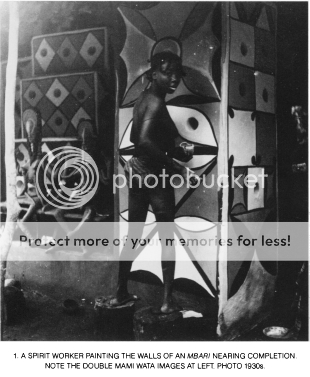 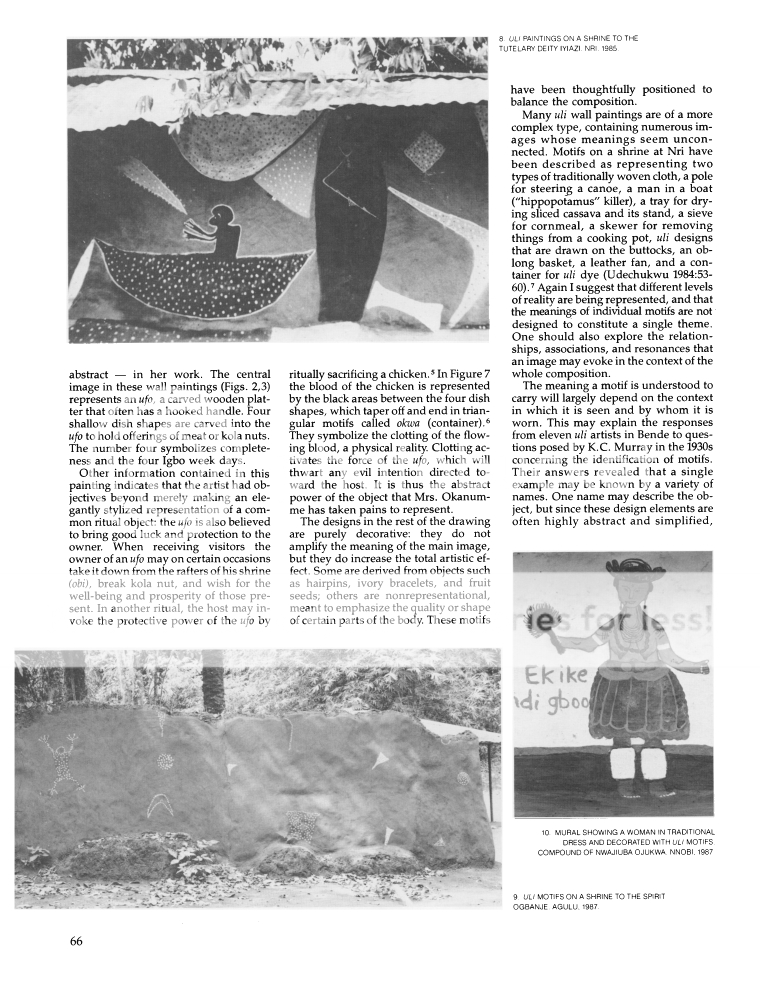 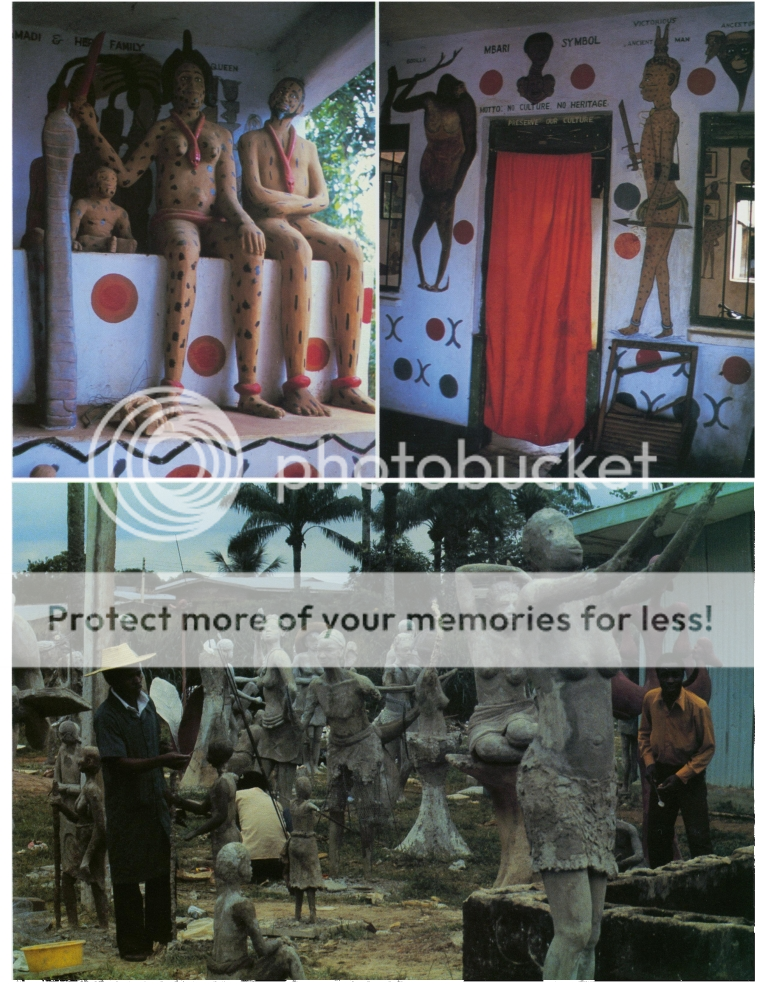 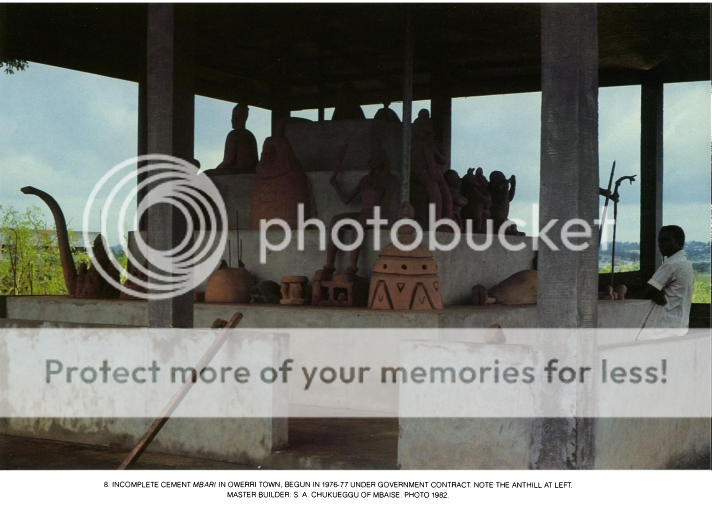 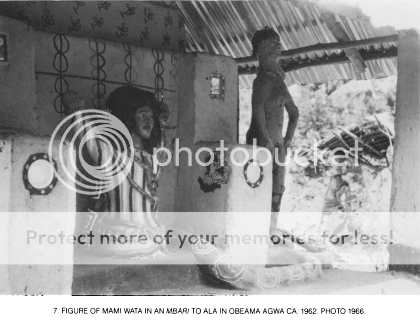 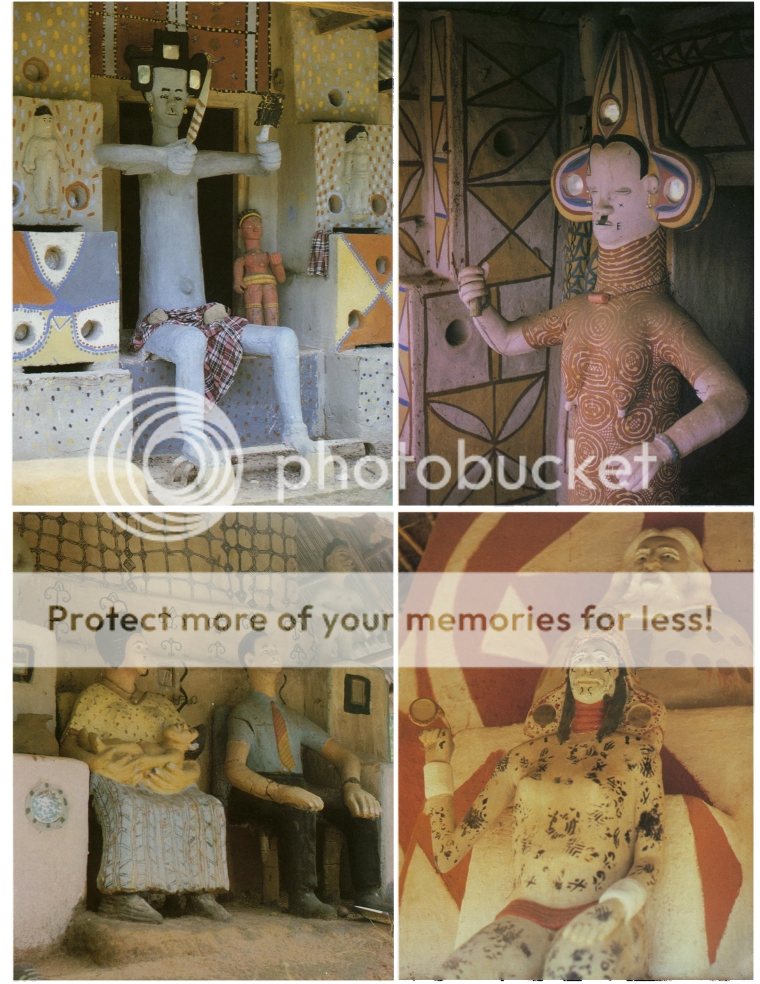 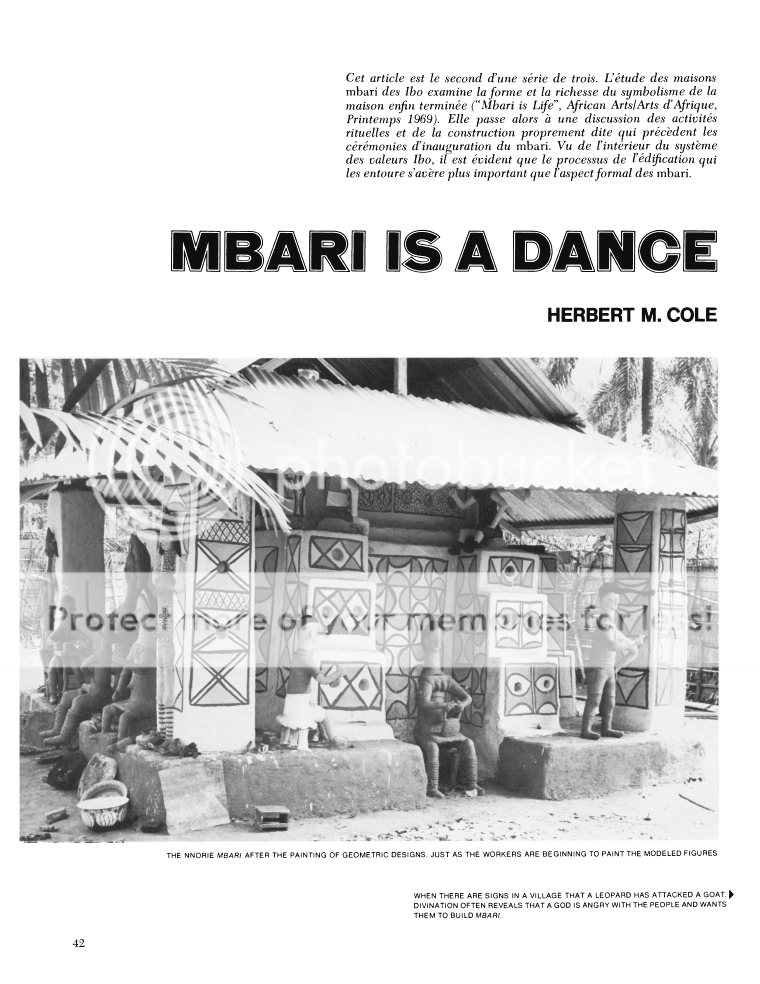  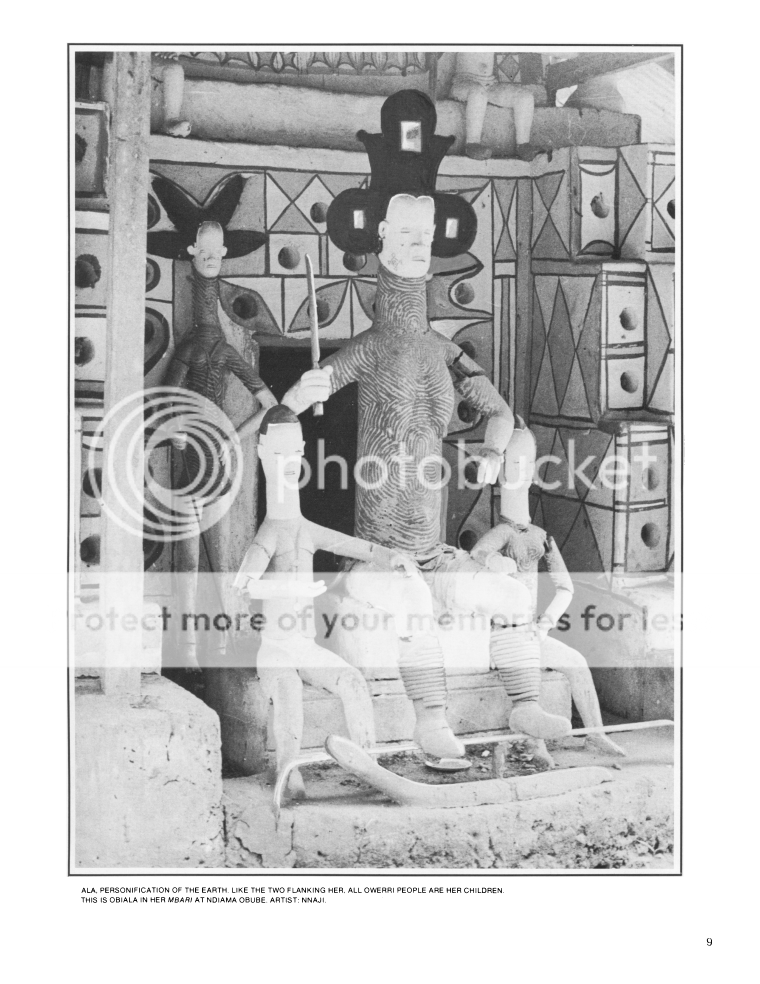 [B]Mbari Layout[/B] 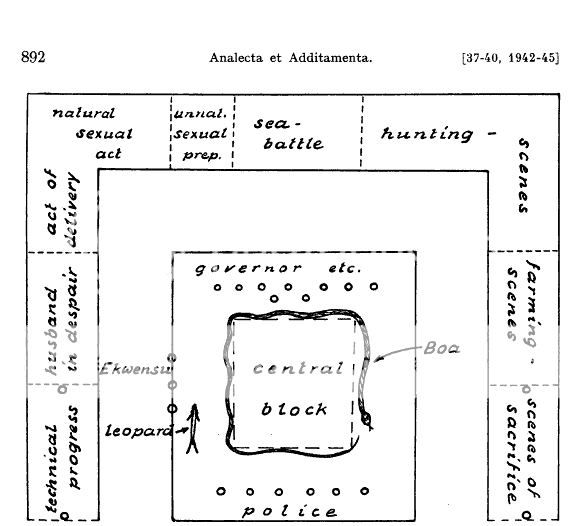 1 Like 3 Shares |
| Re: Art And Architecture Of The Igbo People by Crayola1: 5:22am On Nov 22, 2011 |
Yam Barn [img]http://3.bp..com/-2QRBbBKBB8I/Tqdw8qlnpDI/AAAAAAAAAwY/H7s6_nHOHPw/s1600/yam%2Bbarn.jpg[/img] Location: ?Unknown? | Date: 1880-1939 | Credit: J Stöcker Wooden door [img]http://4.bp..com/-pdpAywwBTTk/TqduW_W3BUI/AAAAAAAAAv8/2mNwaYtOBvY/s400/entrance.jpg[/img] [img]http://3.bp..com/-Xot6-1ZvXy4/Tqdtt6oqikI/AAAAAAAAAvw/d1iv-lf0fOY/s400/door.jpg[/img] Location: Ihale (Ihiala?) | Date: 1880-1939 | Credit: J Stöcker Entrance of a building [img]http://2.bp..com/-nqNVx7zgu2s/TqdsvFcsUQI/AAAAAAAAAvk/-PAJexzDG4c/s400/Doors.jpg[/img] Location: Ihale (Ihiala?) | Date: 1880-1939 | Credit: J Stöcker Market [img]http://3.bp..com/-xY2P9t5bq2M/TqSeovXGkVI/AAAAAAAAAvU/KJulFoCeOfY/s400/AN00058234_001_l.jpeg%2Bcopy[/img] Location: ?Unknown? | Date: 1880-1939 | Credit: J Stöcker Ala (The Igbo Goddess of the Earth) [img]http://4.bp..com/-2z-s4WixfvM/TqSehhSHIGI/AAAAAAAAAvI/-J67sAcIPkA/s400/AN00058163_001_l.jpeg%2Bcopy[/img] Location: ?Unknown? | Date: 1880-1939 | Credit: J Stöcker Life size figurines [img]http://2.bp..com/-3KnNfW2Q2Qc/TqSeaPg7Q1I/AAAAAAAAAu8/W8yrmdeTH2s/s400/AN00058166_001_l.jpeg%2Bcopy[/img] boy standing beside two life-sized wooden Igbo figures. Figures represent a man and a woman.Location: Ihale [Ihiala?], Alaigbo | Date: 1880-1939 | Credit: J Stöcker 1 Like 3 Shares |
| Re: Art And Architecture Of The Igbo People by exotik: 4:37pm On Nov 23, 2011 |
 i really like the "mohawk" this woman is wearing. it seems we always had these styles that are being reintroduced to us. any young nigerian girl wear her hair like this today, oversabi nigerians go say she is copying oyinbos and going for the "punk rock" look. how about she is copying what her igbo ancestors wore? and the lady in that picture seems like a young woman showing off her youthful exuberance. nice one. |
| Re: Art And Architecture Of The Igbo People by Crayola1: 5:23am On Nov 24, 2011 |
 glad you liked the new additions glad you liked the new additions |
| Re: Art And Architecture Of The Igbo People by igbo2011(m): 3:44am On Mar 23, 2012 |
I commend you on this thread, I love to learn about history, especially African history. I am sort of a history buff. |
| Re: Art And Architecture Of The Igbo People by Crayola1: 8:06pm On May 14, 2012 |
An Ibibio woman in wedding attire 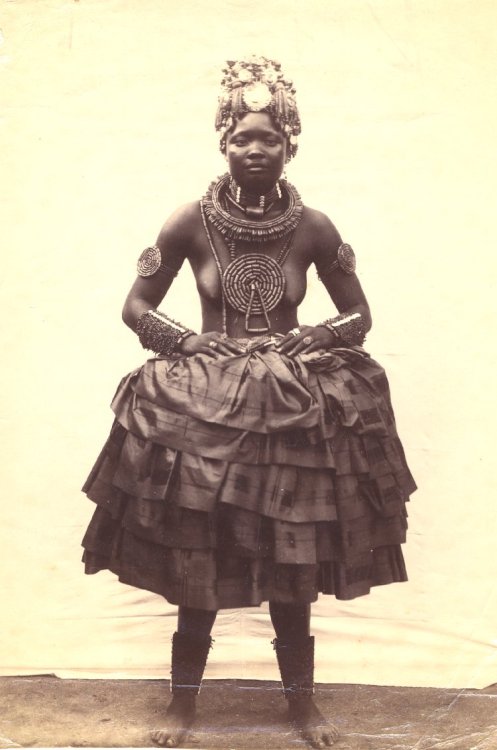 An Igbo woman in wedding attire 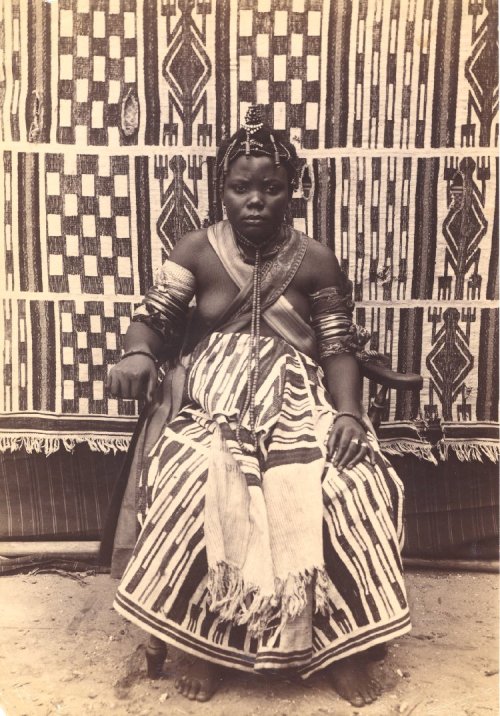 An Igbo leader/elder 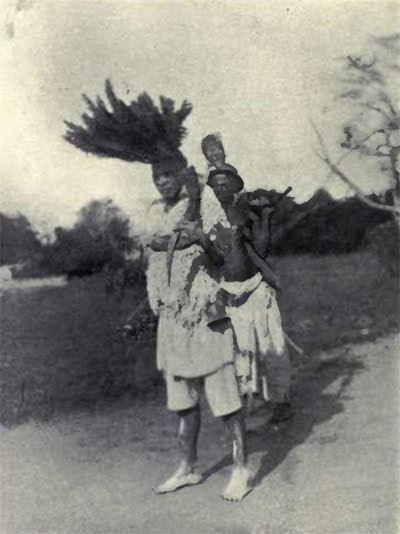 Igco Mmuo Doll 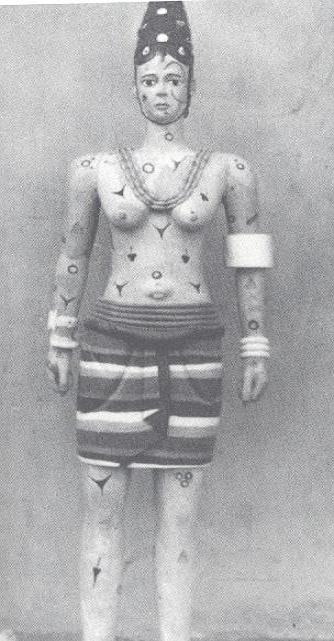 Inside a shrine in Ohafia  Common Igbo Household Items 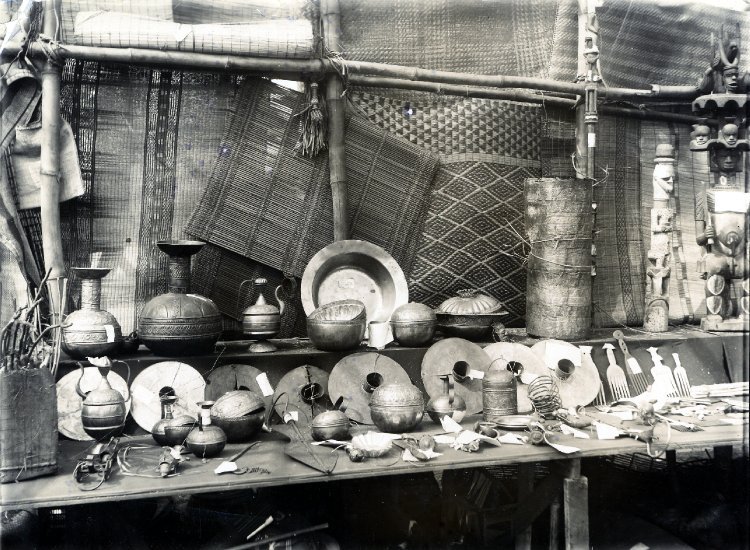 Masquerades [img]http://amightytree.org/oldsite/Ndi-Onicha%20&%20Ndi-Igbo/Newcomers%27%20Experiences%20&%20Wider%20Realities/02-31%20hunter%20dancers.jpg[/img] 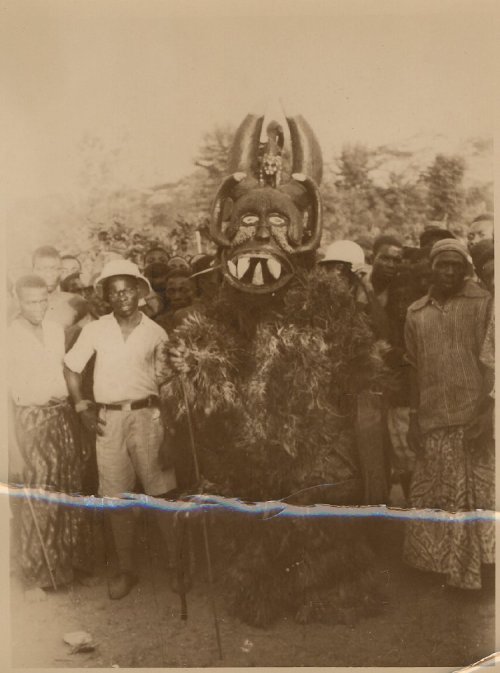 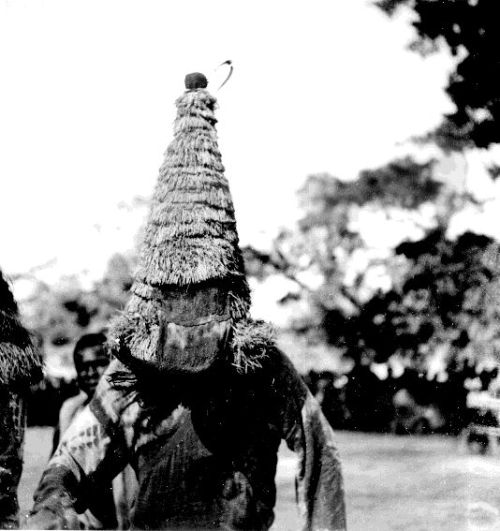 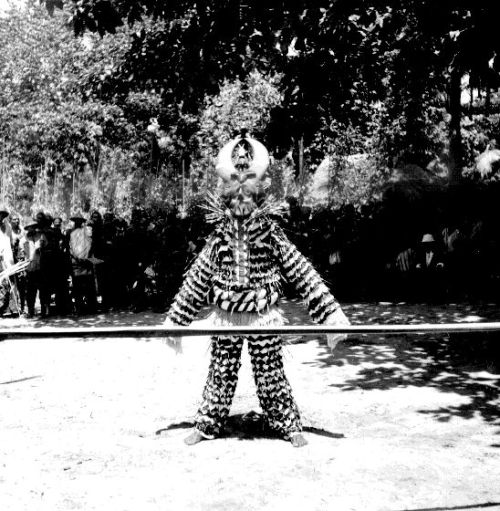 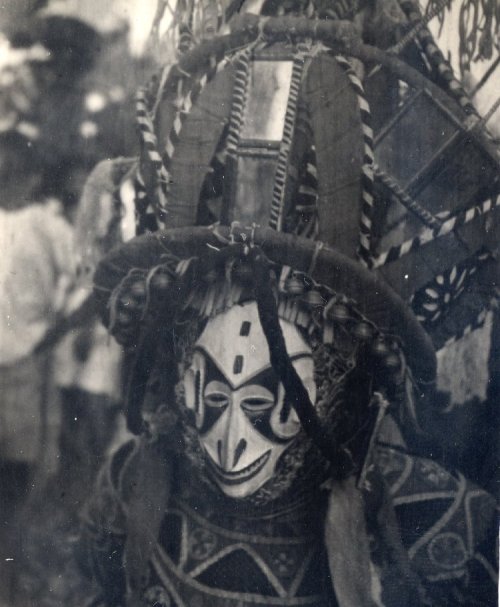 Diagram of a watchtower in Igboland 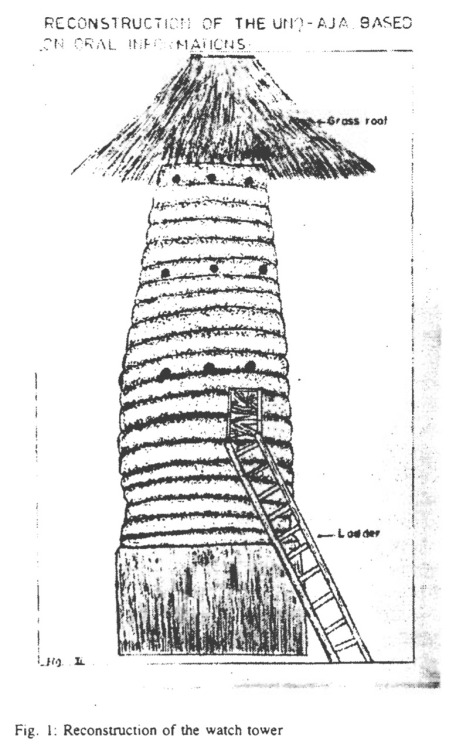 1 Like 3 Shares |
| Re: Art And Architecture Of The Igbo People by Crayola1: 8:25pm On May 14, 2012 |
Pipe 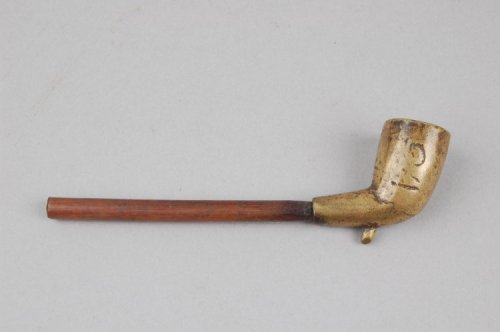 Cloth  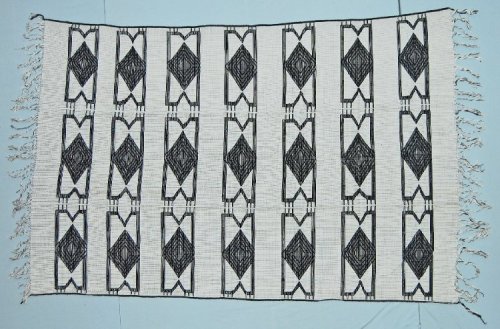 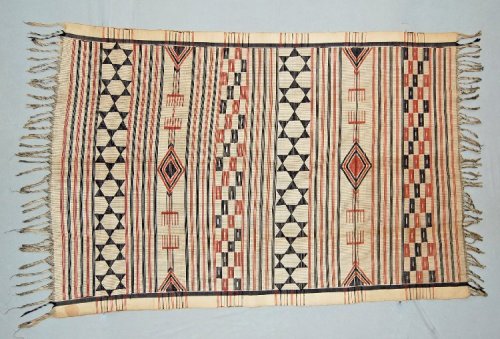 Igbo Architecture 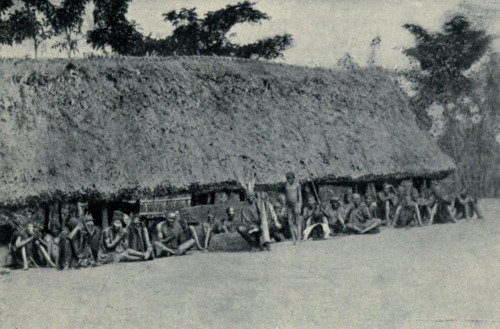 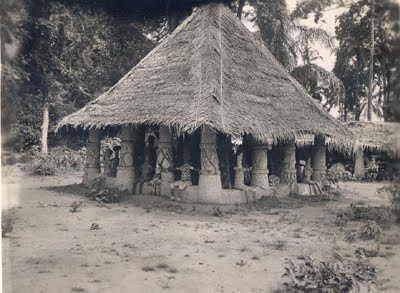 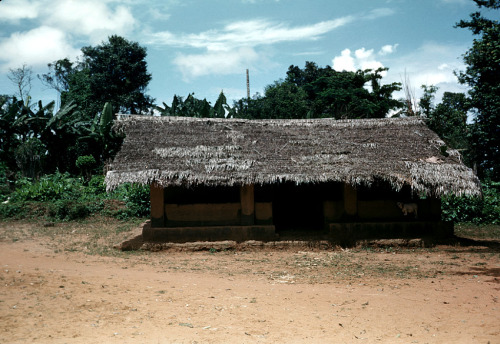 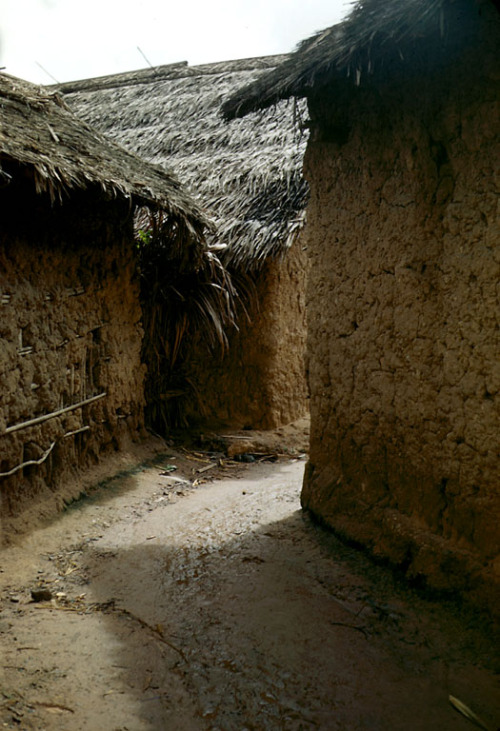  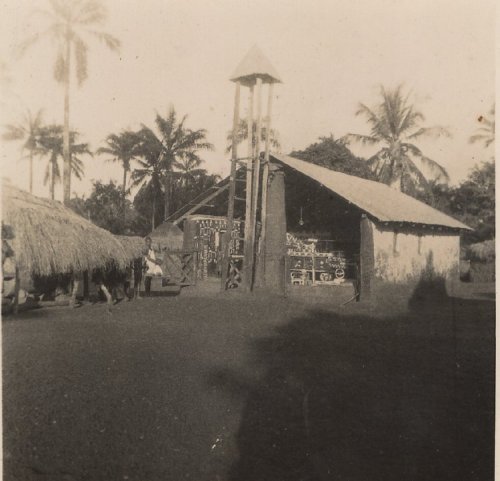 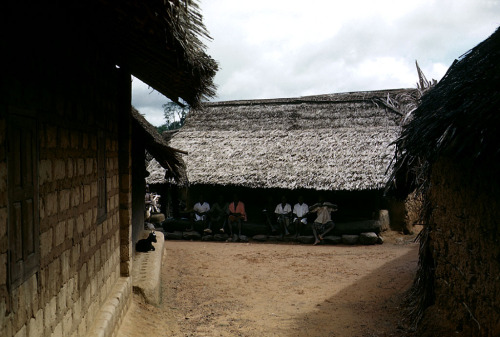 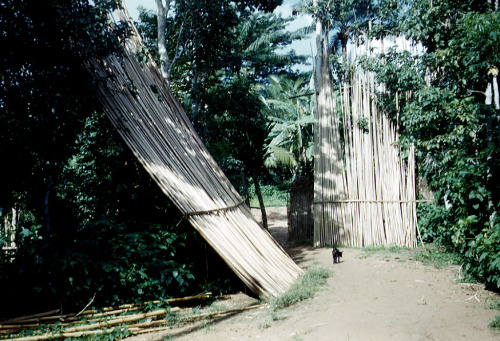  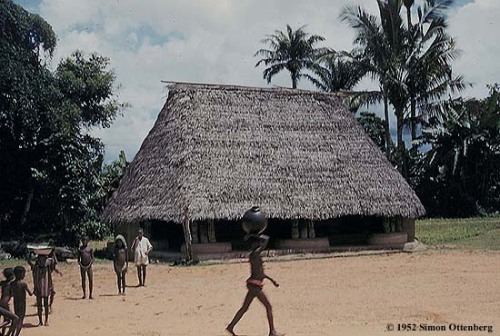  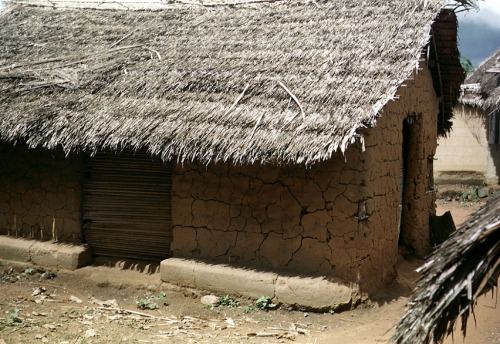 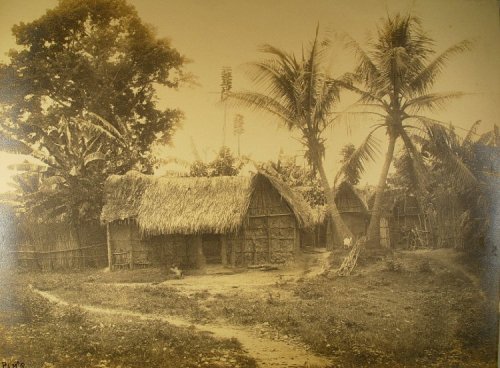 Ibibio Footbridge 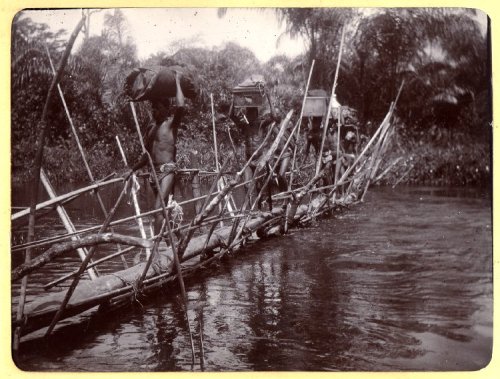 1 Like 3 Shares |
| Re: Art And Architecture Of The Igbo People by Crayola1: 8:39pm On May 14, 2012 |
Continued 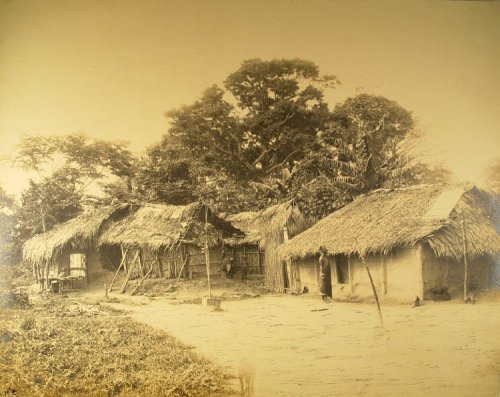 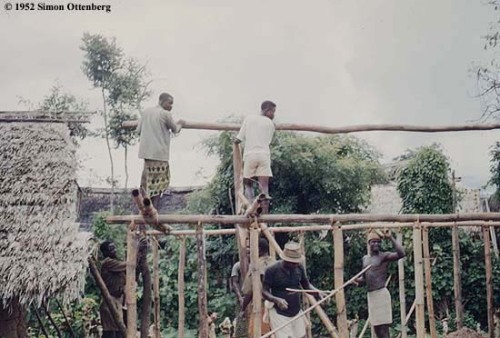 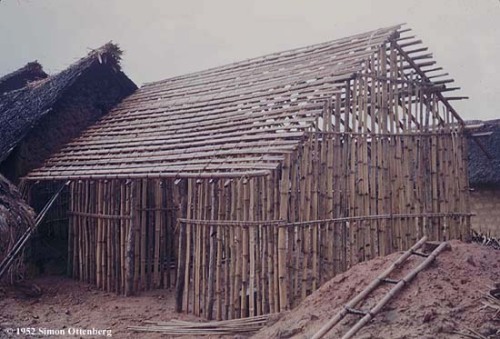 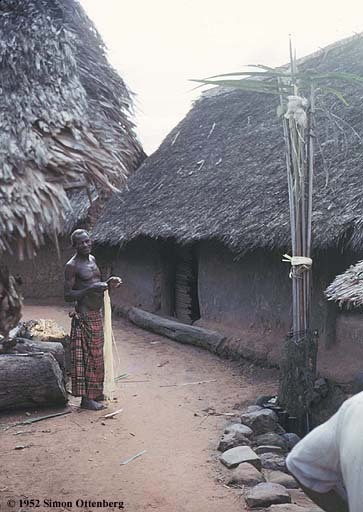 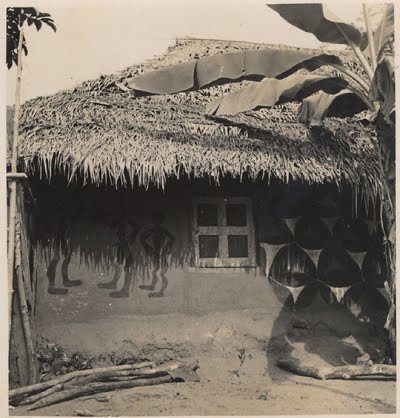 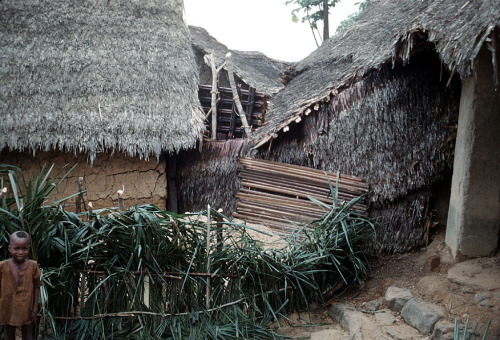 Doorways/Gates 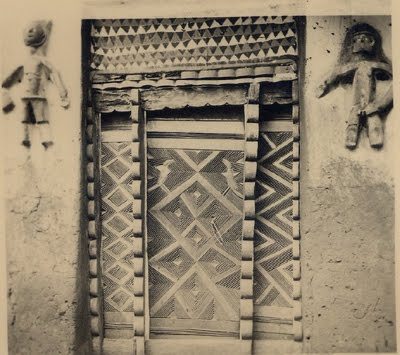 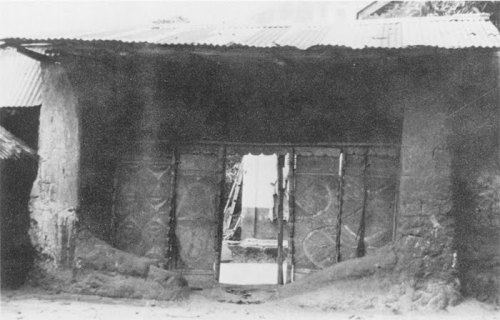 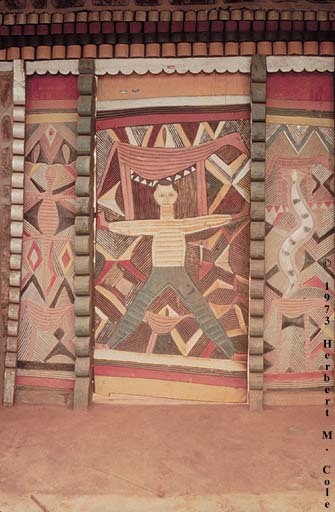 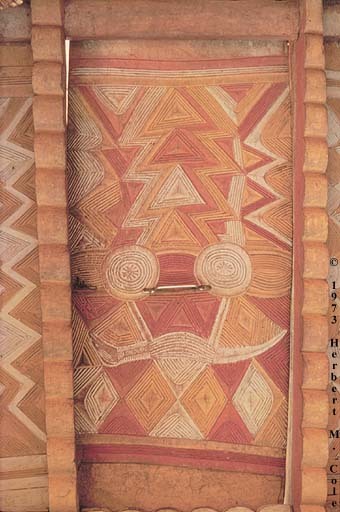 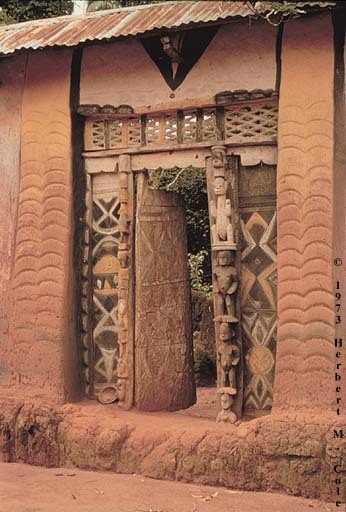 1 Like 3 Shares |
| Re: Art And Architecture Of The Igbo People by Crayola1: 8:41pm On May 14, 2012 |
Nsibidi (Igbo writing) a court case 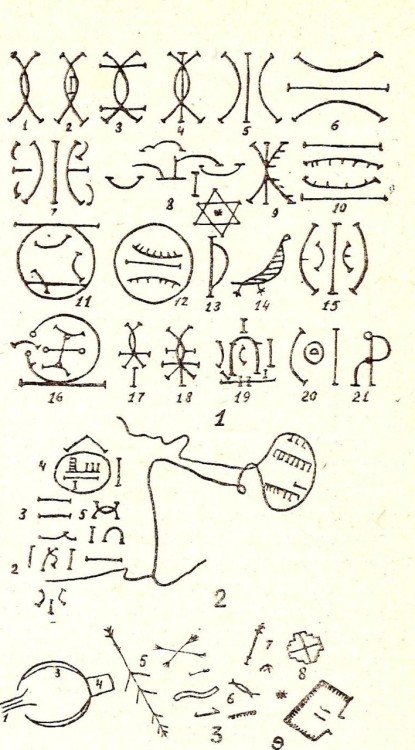 A traditional canoe on the Imo River 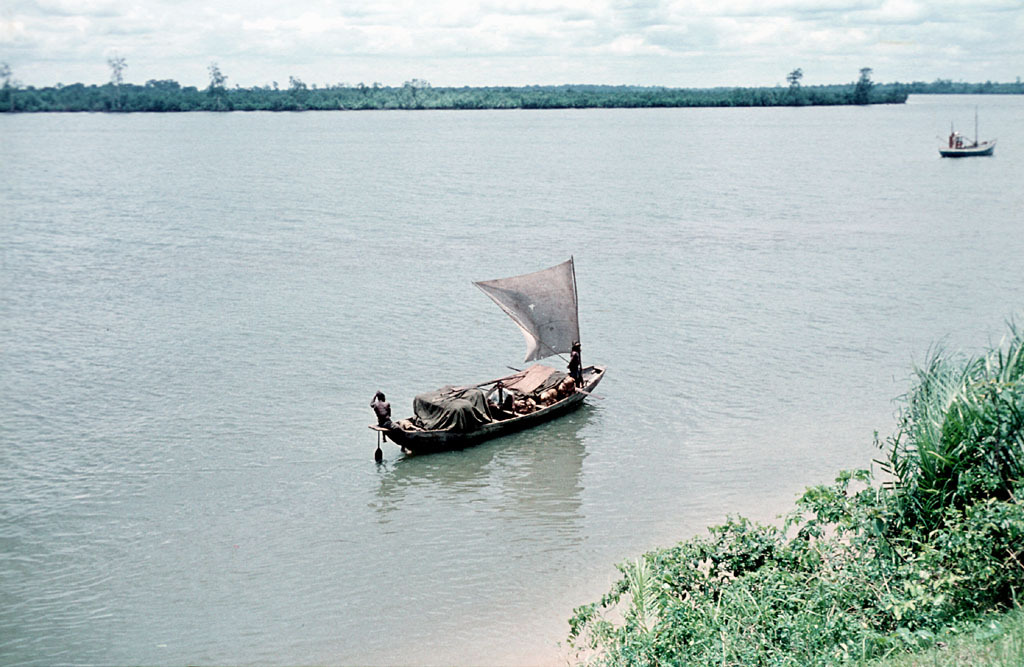 Dock at Aboh, along the Niger River 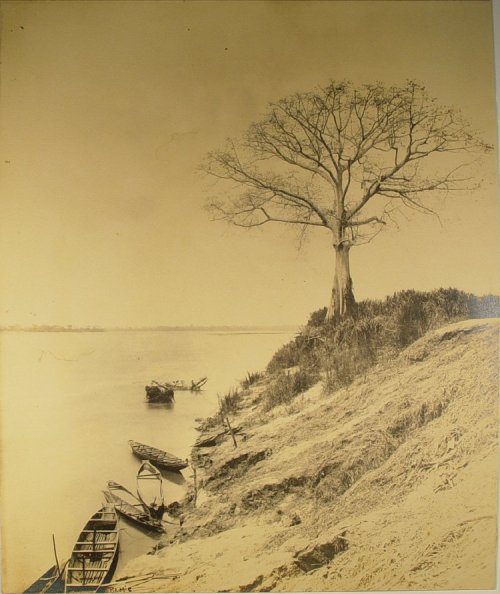 Bow 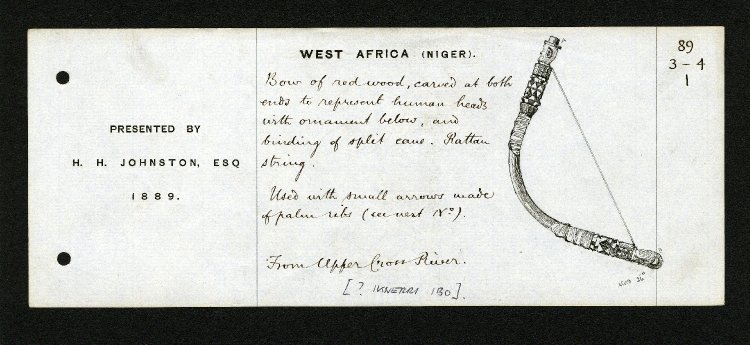 Jug 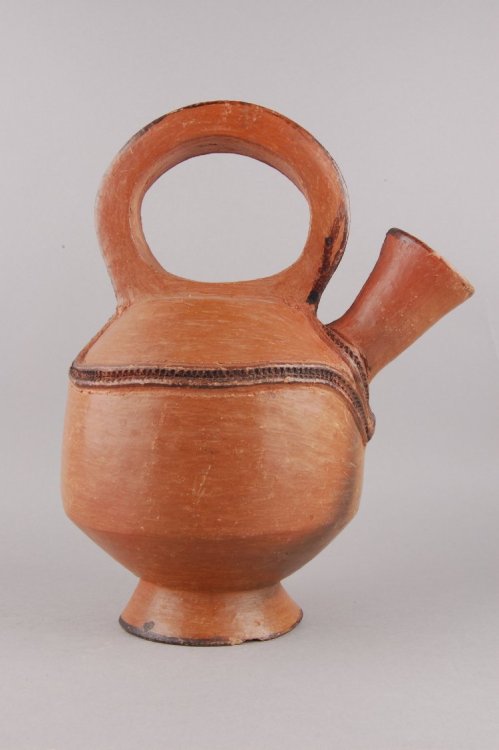 Stool 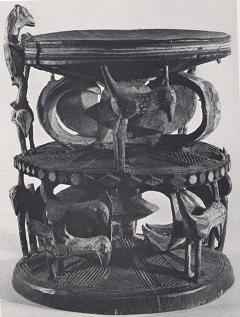 Igbo Metalworks 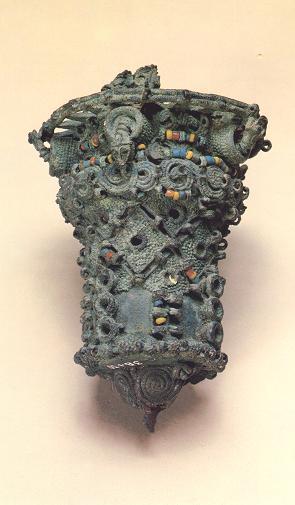 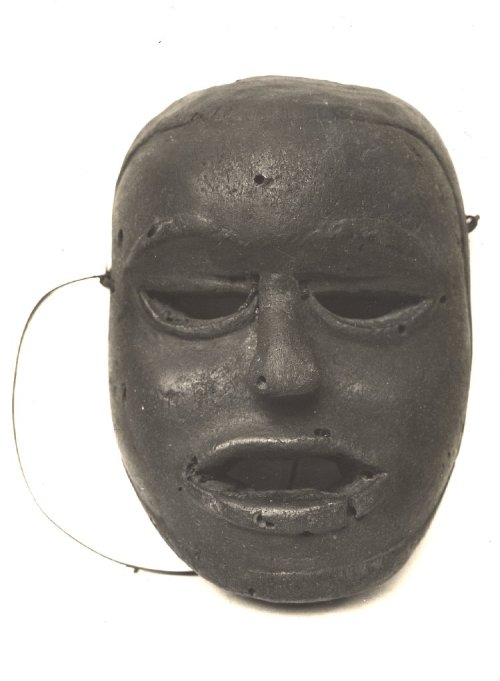  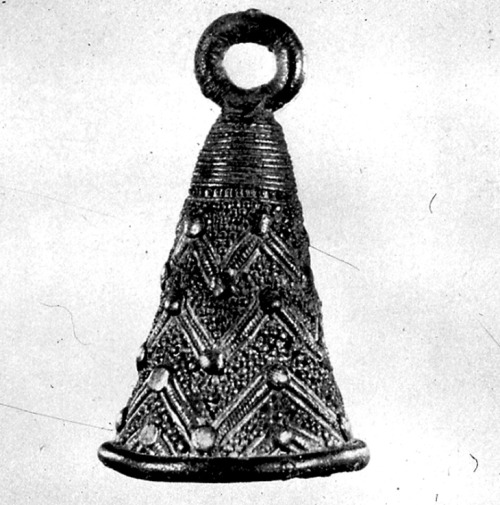 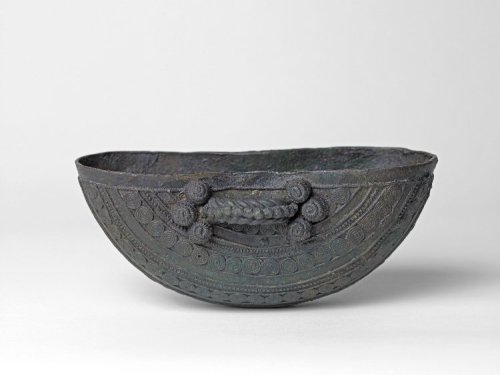 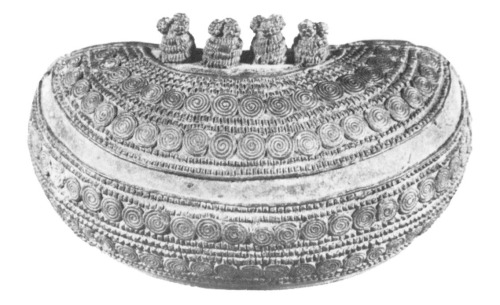 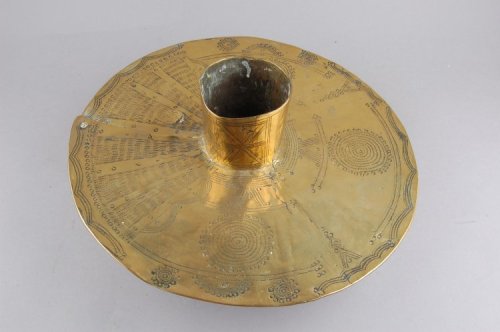 Harp 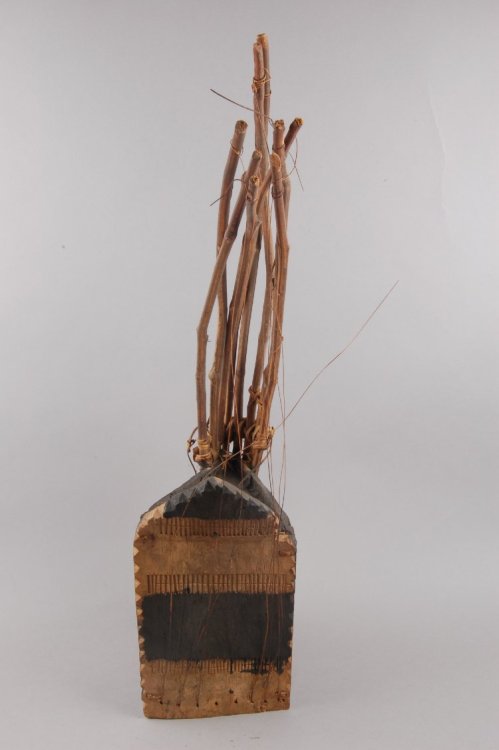 1 Like 3 Shares |
| Re: Art And Architecture Of The Igbo People by WAXXSTAXX(m): 2:40am On Oct 14, 2012 |
THE IBIBIO CIVILIZATION OF AROCHUKWU The Ibibio word "Nyibi" which means turn in English, is the root of Nyibidi. Nyibidi means turning. The play was usually accompanied with drummings. The drum is called Ibit. The drum for the ruling Crown is called Ibit Itam. Itam means crown, hat, or headgear. Ekpe was indeed the governing deity and Ibit Itam was one of their major plays. Ukara means governance or government in Ibibio. Ukara cloth is worn by those in the government of Ekpe. The Ekpe and even Ekpo masquerade of old used to dance in a circular motion in order to induce a trance-like effect or feeling. Hence Nyibidi. Ibibio is the largest language of the Cross River and Akwa Ibom territories. Efik, Ekoi, Annang, Oron, Eket, Qua, Ibeno, Okobo,etc. are all variations of Ibibio. The Ibibio owned and controlled Arochukwu until they lost it in 1634 to the allied forces of the migrating Igbo and the Akpa. The Igbo slaves of the Ibibio rebelled and joined forces with the Akpa who were themselves of Ibibio origin. The Ibibios left both Arochukwu and their ancient Long Juju, but those who remained continued to run the oracles and influence the Igbo converts/practitioners of Ekpe. The Ibibios and Efiks taught Nsibidi to the Igbos through the Ekpe society. The chief language used in Ekpe is Ibibio. The Ibibios and Efiks knew Arochukwu as Ibom and Mbot Abasi. Mbot means creation. Abasi means God. Therefore, Mbot Abasi means the creation of God or, simply, the people of God. While in Arochukwu, the Ibibio leaders had a secret society called Ekpe. Ekpe means leopard or lion. The leadership operated (and still does)in an esoteric manner. Only members are privy to the innerworkings of the group. They developed an elaborate system of logograms through which their ideas, knowledge, and activities were recorded. Nyibidi which means turning (going in circles), evolved into Nsibidi. Nsibidi is Ibibio for what is at play or, what's playing? Nso = what. I(as in letter "e" = is. Bidi = play or playing. NSO-I-BIDI (NSIBIDI) or NSO-I-BIRI(NSIBIRI) means what's playing? What's at play? Therefore, Nsibidi means what is playing or, what's at play? Nsibidi was later adopted as the name for the writings associated with Ekpe society. It is true that the Europeans found most of the Nsibidi script among the Ekoi, but it is really of Ibibio origin. When Aro and their allies conquered the Ibibio in 1634, they took over the oracle but retained its priests, with Loesin as the chief priest. It was he who later initiated Aro indigenes into the cult as priests. IBINI UKPABI is the IGBO corruption of IBIT UKPABI. Some say the Igbos used the word IBINI as homage to the slave-raiding Oba of Benin who caused their migration to Arochukwu. After the IBIBIO lost AROCHUKWU, the Igbos renamed the Ibibio deity IBI ITAM (Drum of the Crown). They called it IBIT UKPABI. IBIT is IBIBIO for DRUM. UKPABI is an IGBO name. The corrupted version, IBINI UKPABI, is what they use these days. Since Arochukwu(Mbot Abasi in Ibibio or God's creation/people in English) is the spititual center of the Igbo race, you can say that their 'holyland' is actually of Ibibio origin. I'll call it the IBIBIO CIVILIZATION OF AROCHUKWU. The Ibibio created it and that explains why the Aro deities have mostly Ibibio names. The Igbos could not fully adapt Nsibidi because translation from Ibibio into Igbo had too many constraints. Original meanings of Ekpe society's Nsibidi often got lost in translation. "There was no war between Aros and Ibibio -what happened was what one would accurately describe as a coup. The Aros who were assistants (slave by Europeans) at the Ibritam Shrine organized a coup with the help of Ekoi, Akunakuna, and Igbos and seized the shrine from their Ibibio masters. Talbot** put the date at 1300 -1400 based on the geneaology and calculation of the ages of relatives of informant who claims their forebears were in charge of this shrine -we dispute this because the informant forebears couldn't have been incharge since religious affairs in Ibibio land was entrusted to the group known as Annang today ,and this informant came from a different group. However, Talbot also based his date from Aro informant. We still think that the date was much earlier. However the consensus is that the Aros were in possession of the shrine before trade with the Portuguese and later Slave trade with Efik and later the Ijaws-Bonny and kalabari when Ibibios prohibited transportation of people across their territory." “Obot Okon Ita or Obinkita(an Igbo corruption of the name) was the capital of the Ibibio kingdom of Obong Okon Ita and Ibom(nation in Ibibio) before its conquest by Igbo and Akpa invaders in 1690–1720. This town is significant in Aro History because Obinkita became the center where defeated Ibibio warriors were judged.ion in Ibibio. This is why all Aro villages assemble at Obinkita during the Ikeji festival. Obinkita is now one of the 19 villages of Arochukwu.” “Agwu Inobia or Eze Agwu the man that was the founding father of igbo Arochukwu Agwu Inobia or Eze Agwu was one of the founding fathers of the city of Arochukwu, the third largest city in Abia State in southeastern Nigeria. He was the descendant of Nna Uru (a immigrant from the Igbo heartland to the Obong Okon Ita area) and king of the Eze Agwu clan centered in their capital the Amanagwu city-state. As new settlers, the Eze Agwu clan was resisted by the regional power Obong Okon Ita which led to the start of the Aro-Ibibio Wars. The war initially became a stalemate. Both sides arranged a marriage between the king of Obong Okon Ita and a women from the Eze Agwu clan in an attempt for a peaceful coexistence. The marriage eventually failed to bring peace but eventually played a decisive role in the war. King Agwu Inobia invited Priest Nnachi from the Edda group near Afikpo to help him break the stalemate and win the war. When he arrived, Nnachi and Eze Agwu allied with prince Kakpokpo Okon of the Ibibio kingdom of Obong Okon Ita. Kakpokpo Okon was the son of the marriage between the Igbo women of the King of Obong Okon Ita. The Eze Agwu/Nnachi faction decided to help Kakpokpo attempt to overthrow his brother king Akpan Okon and the coup was heavily resisted. Nnachi called on an Eastern Cross river group known as the Akpa for help. The Akpa are said to have possessed guns and are credited for introducing the weapon to the region. Princes Osim and Akuma Nnubi led Akpa soldiers to help fight against the Ibibios. The alliance between Eze Agwu, Nnachi, Kakpokpo Okon, and the Akpa eventually defeated the Obong Okon Ita forces (1690–1720) under the leadership of Osim Nnubi. As a result of the Aro-Ibibio Wars, the alliance formed the Arochukwu kingdom. Akuma Nnubi was appointed king of Arochukwu in the place of his brother Osim Nnubi who died during the end of the war. Prince Kakpokpo Okon died and the Ulu Okon dynasty was assimilated into the Eze Agwu lineage. The Amanagwu was incorporated as the first of the 19 city-states of Arochukwu and Eze Agwu became one of the three lineages of Arochukwu.” "The other major slave-exporting state was a loose confederation under the leadership of the Aro, an Igbo clan of mixed Igbo and Ibibio origins, whose home was on the escarpment between the central Igbo districts and the Cross River. Beginning in the late seventeenth century, the Aro built a complex network of alliances and treaties with many of the Igbo clans. They served as arbiters in villages throughout Igboland, and their famous oracle at Arochukwu, located in a thickly wooded gorge, was widely regarded as a court of appeal for many kinds of disputes. By custom the Aro were sacrosanct, allowing them to travel anywhere with their goods without fear of attack. Alliances with certain Igbo clans who acted as mercenaries for the Aro guaranteed their safety. As oracle priests, they also received slaves in payment of fines or dedicated to the gods by their masters as scapegoats for their own transgressions. These slaves thereby became the property of the Aro priests, who were at liberty to sell them." http://countrystudies.us/nigeria/7.htm Arochukwu. http://dir.groups.yahoo.com/group/WorldIgboCongress/message/15772 https://www.nairaland.com/675773/great-leaders-nigerias-history-before/2 PROFESSOR PHILIP EMEAGWALI http://www.emeagwali.com/photos/yoruba/photo-essay-on-yoruba.html 1 Like 1 Share
|
| Re: Art And Architecture Of The Igbo People by kingston277(m): 2:07am On Jan 25, 2015 |
Crayola1:How old is that molding? Is it a recreation of an earlier design? Whats the explanation for the wheeled vehicle there? [img]http://raai.library.yale.edu/web/art/6/7/22308_images_image_6797_medium.jpg[/img] There are wheels in Dahomey art as well. Why haven't historians made note of this? |
| Re: Art And Architecture Of The Igbo People by Nobody: 9:17am On Jan 25, 2015 |
I can't speak for the Dahomeyan piece, but the Igbo moulding up there is definitely post European contact. Made in the Colonial period. |
Suri Tribeswomen Of Ethiopia Who Wear Large Lip Plate To Determine Worth In Cows / Michael Olabamiji Fakeye's Corpse Made To Stand To Snap With Family In Osun / Restrictions Of Movement Around the Oba of Benin Palace?
(Go Up)
| Sections: politics (1) business autos (1) jobs (1) career education (1) romance computers phones travel sports fashion health religion celebs tv-movies music-radio literature webmasters programming techmarket Links: (1) (2) (3) (4) (5) (6) (7) (8) (9) (10) Nairaland - Copyright © 2005 - 2024 Oluwaseun Osewa. All rights reserved. See How To Advertise. 99 |